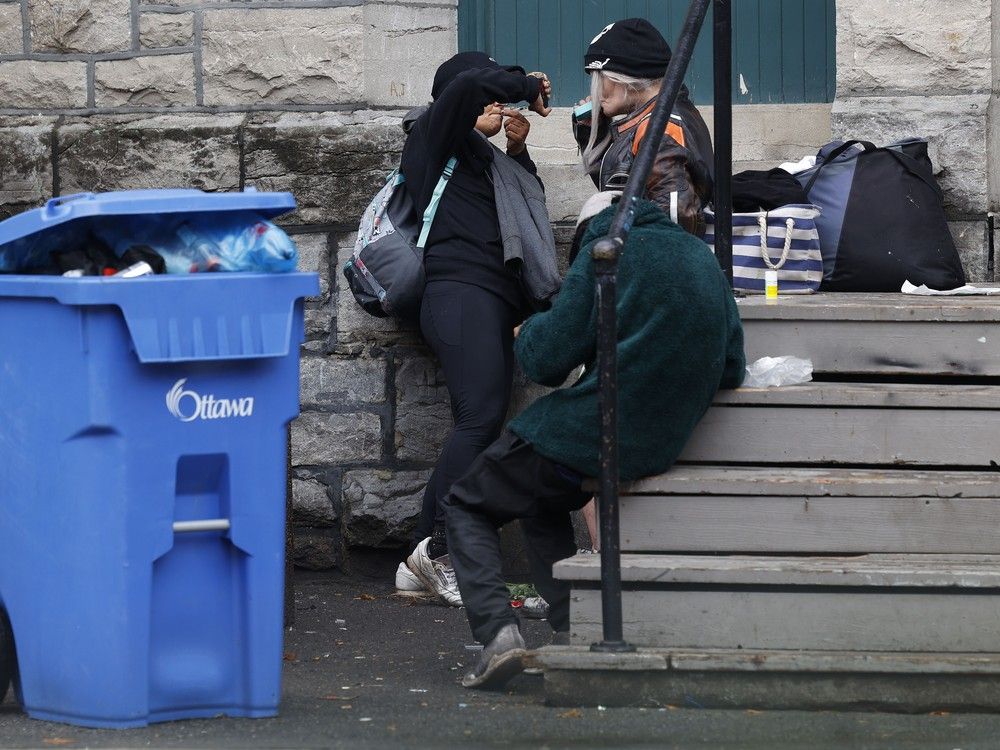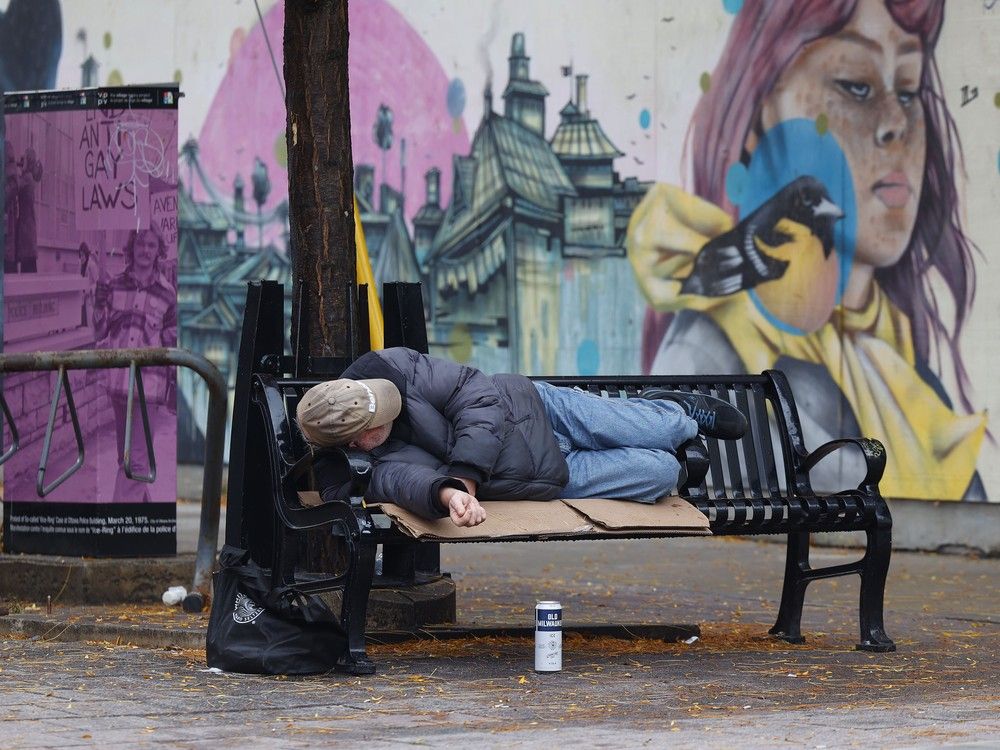My name is Carrie. I am 28 years old. I have struggled with an
opioid use disorder
and have
experienced homelessness
on and off for several years.
When I learned two years ago that I was pregnant, I enrolled in a methadone program. I’d been in youth care myself, and knew I’d be hearing from the Children’s Aid Society after my daughter was born. I’ve worked hard to follow all their recommendations, and I’m voluntarily getting support through them. My caseworker is extremely proud of my progress. My daughter is 18 months old now. She motivates me every day.
Not long ago, a close family member died. I was devastated and, after making sure my daughter was safe with a grandparent… I used again. I know relapse is part of recovery, but I woke up the next day more determined than ever to stay clean, and I have.
More recently, I had a huge fight with my partner, my daughter’s father. He’s 48, still uses, and is verbally and emotionally abusive — when he’s around, that is; he disappears for months at a time. I’d leave him, but I’m too afraid. I’m also financially dependent on him.
After the fight, he took the baby and left. I called the police, who did a wellness check and made sure our daughter was safe. They said they couldn’t do anything else because there’s no formal custody plan in place. They said I needed to get a lawyer. Meanwhile, the rent is due and I have no way to pay it.
I need to find a place of my own. I need a job. And most of all, I need to get my daughter back. I don’t feel she’s safe with him.
*
Drawn from the experiences of actual people who have been homeless, Carrie is one of a half dozen composite characters whose stories form The Empathy Project — a simulation created by the Alliance to End Homelessness Ottawa to show participants what it’s like to navigate housing insecurity and homelessness.
City councillors have participated. The project is also part of uOttawa’s first-year med school curriculum, so that future health professionals will better understand determinants of health, homelessness and the systemic barriers involved.
Earlier this month, about 60 people — many from the frontlines and boards of directors of organizations such as the Shepherds, Cornerstone and The Mission — each assumed one of the roles and spread out through the Vanier offices of the Canadian Mental Health Association. For a morning, we negotiated our way through “the system” — the overlapping (and often underlapping) housing, legal, child-welfare, health, shelter, employment and social services hoops that real people must criss-cross constantly in search of help and relief.

After receiving our profiles and a list of where in the building each service was located, we were told where to go first. After each “appointment,” a QR code told us where to go next.
My first stop was the legal clinic. To get my daughter back, I was told, I needed a lawyer. I didn’t know where she was, and I certainly didn’t want to confront my partner. I also knew that my methadone treatment and relapse would affect how people judged me as a parent — but withholding that information would only backfire.
The legal clinic wasn’t where a sign said it would be, so before talking to anyone, I’d already circled the floor. When I finally arrived, I waited, as everyone always does.
Then I learned that to qualify for legal aid, I needed to prove that I made less than $30,000 last year. That should be easy — I hadn’t made anything — but proving a negative is harder than you think. “You might have to visit the community centre to get them to give you a bit more information on that,” the woman helping me said. “But that’s the homework you’ll have to work on.” But even if I got that, she warned, it would be weeks before I could speak with a lawyer.
Next stop: my CAS caseworker. I expected concern for my daughter’s safety, or maybe help with housing. Instead, he warned that my history of drug use — even though I’d stopped — would hurt my custody case. I should continue with methadone, he said, and also start addiction counselling. I ask where I should go for that. “Legal aid can help,” he said. Then he suggested applying for the Ontario Disability Support Program (ODSP) to show that I can financially support my daughter. “But first,” he added, “you’ll need to go to the legal clinic.”
At the ODSP office, I quickly learned that I didn’t have the documents I needed: no lease, no bank statements, no SIN card. My doctor would need to fill out a form. I would need to track down proof of residence. Even if approved, benefits would take three months to kick in. And because my daughter wasn’t living with me, I’d only receive $1,308 per month — including a $556 housing allowance. My rent alone was $1,250. It was suggested I try Ontario Works, which “might be faster.” But they, too, would require much of the same missing paperwork.
It was around this point that I realized I was doing the same math that Carrie might be doing, and not just about whether I could afford rent — I couldn’t — but the math of how to talk to the people who might help me. Was calm better, or would that read as passivity? Where was the sweet spot between desperation and deference? What tone of voice was most likely to open a door?
This was also about when the visits and officials began melting together.

The simulation only lasted about 90 minutes. I despaired for Carrie. Not once had anyone even asked her daughter’s name.
I was surprised by how many fellow participants felt similarly: anger, shame, frustration, helplessness, despondency. One said he found the exercise more useful than a thousand presentations, documents, statistics and graphs. “This made the point real.”
It did. What we saw and experienced, explained Alliance executive director Kaite Burkholder Harris, was a system that polices people. “It’s not human-centred. It legislates poverty.”
The project didn’t pretend to show us what homelessness is like. Instead, it showed the crushing weight of the machinery that drives people there. It helped us understand that homelessness and housing insecurity aren’t signs of people’s moral failures, but rather how systemic failures create those results.
The project, as promised, provided empathy, a compassion that needs to transform into advocacy and action towards a more streamlined and humane system that better serves people’s needs. Until then, Carrie — and the thousands of people she represents — will be wondering where to turn next.
Related
- Little-known social agency may hold key to ByWard homelessness
- Homelessness in Ottawa has reached a record high. What can be done about it?
Our website is your destination for up-to-the-minute news, so make sure to bookmark our homepage and sign up for our newsletters so we can keep you informed.



